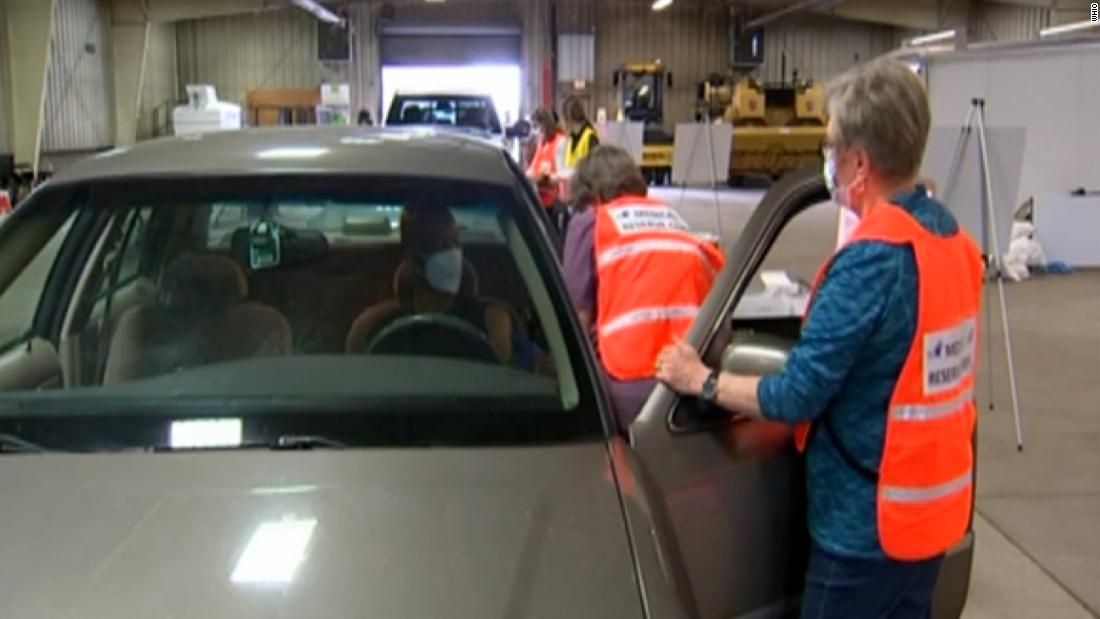
Nearly three months later, with an abundance of vaccines on hand and access to all residents 16 and older, officials struggled to keep appointments, said Kristy Fryman, the emergency response coordinator and information officer for the Mercer County Health District. About 264 people received their first dose at the district clinic earlier this month – about half the number who signed up at the start of the rollout.
“Rural people tend to be self-sufficient, especially among the younger population,” said Fryman. “We’ve also heard that people are waiting to get the vaccine because they want to know about the side effects down the road. And then another comment would be that the vaccine is just too new.”
“We are getting to the point where we are reaching the tough public,” said Lori Tremmel Freeman, CEO of the National Association of County and City Health Officials (NACCHO). “Those who are either unsure about the vaccine, or are on the fence about the vaccine, don’t have enough information, or are just plain … not interested in the vaccine for other reasons.”
Experts, including Dr. Anthony Fauci, estimate that somewhere between 70 and 85% of the country must be immune to the virus – either through inoculation or previous infection – to suppress its spread. But the US is nowhere near those levels, and declining demand – especially now that eligibility has opened up – means that getting there may be a bigger task than some local officials expected.
An issue
She told the United States Congress Joint Economic Commission on Wednesday that a major challenge for vaccinations against Covid-19 in the coming months will be the requirement: get enough people to sign up to take the injection. And there are several reasons why.
“The work we do on equity needs to be deepened and done in the communities where people live and work,” said Freeman of NACCHO. “We have to be very creative in finding unique ways to reach people, including making sure they have the easiest possible access to vaccines.”
In Mercer County, Fryman said officials are working to make the vaccines more accessible, including events targeting the Hispanic population and initiatives to provide more information to the Amish and Marshallese population.
Other groups are hesitant, Gounder said, including younger Americans and what she calls the “movable middle” – the ones on the fence, but who may be influenced by more Covid-19 vaccine information.
“Then you have another group that is much more resistant, more entrenched in their beliefs, it’s about 20% of Americans,” Gounder said. Those are more rural, conservative Americans who don’t trust the health care system and the government, she said.
“That group is more challenging because it’s not necessarily a group that will respond to education like the kind of more movable middle will,” Gounder said. “And we worry about that.”
“It means that geographically – not just rural versus non-rural, but also in political terms – you probably have certain populations with lower vaccination coverage,” Gounder said. “And so … you’ll probably see more broadcasts within those subgroups.” And those populations, she added, could potentially spread seed to other communities.
“I think it has a chilling effect,” said Dr. Paul Offit, director of the Vaccine Education Center at Children’s Hospital in Philadelphia, recently on CNN. “I think people mistakenly think, ‘If it’s true with this J&J vaccine, it might be true with all vaccines.’ ”
Now, a ‘tough fight’ for local officials
Officials in Lubbock, Texas, began noticing declining demand last month. A small urban center with Texas Tech University, the city is the county seat of a mostly rural county.
“We are what people think Texas looks like,” said Katherine Wells, the city’s director of public health. “Tumbleweed and dry.”
When vaccination appointments with Covid-19 first opened, demand was so high that callers crashed the city’s phone system, Wells said. Demand started to decline in March.
“We have a gigantic vaccination clinic that no longer has a public center four days a week, we can do 2,500 vaccines a day,” she said. “Starting about three weeks ago, we couldn’t keep all those agreements.”
The J&J news, she said, “slowed us down even more.” The clinic, which can house hundreds of vaccinations per hour, averaged about 125 people per hour the day after the break was announced, although officials offered the Moderna injection to those who had J&J appointments, Wells said.
The shift in demand underscores the challenge for health officials, experts say.
“ That first question with those high-priority groups and in order not to be able to keep up with that with the general population means that we really have a lot of work to do, and we need to do it now, sooner than we thought we might have. to do it, ”said Freeman.
“I think we’ve gotten the easy part and I think it’s really necessary to be in the community or find people who need to be vaccinated and present the vaccine with as few hoops as possible,” Wells said.
Local officials have set up a program targeting minorities and populations “who usually leave the healthcare system,” Wells said, and they have also started pop-up clinics for all major events in the area, including university sporting events, parades and others. celebrations.
“I would certainly like to get that higher,” said David Gonzales. “But then again, there’s only so much we can do. We can promote it, we can ask people, offer it, it’s free. We try to offer enough people to get into a clinic. We try to make it so easy. possible., but there is really only so much we can do. “







